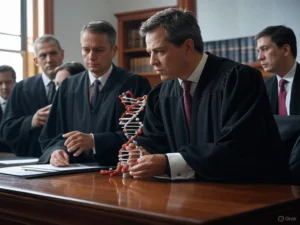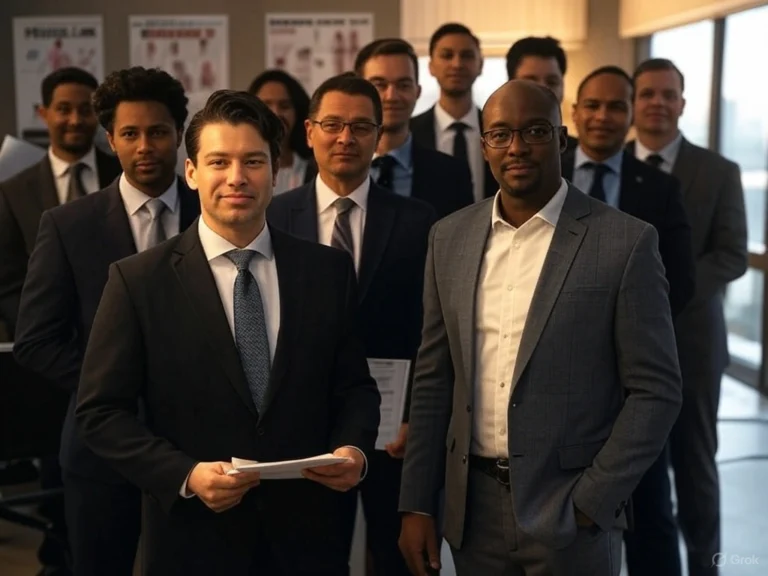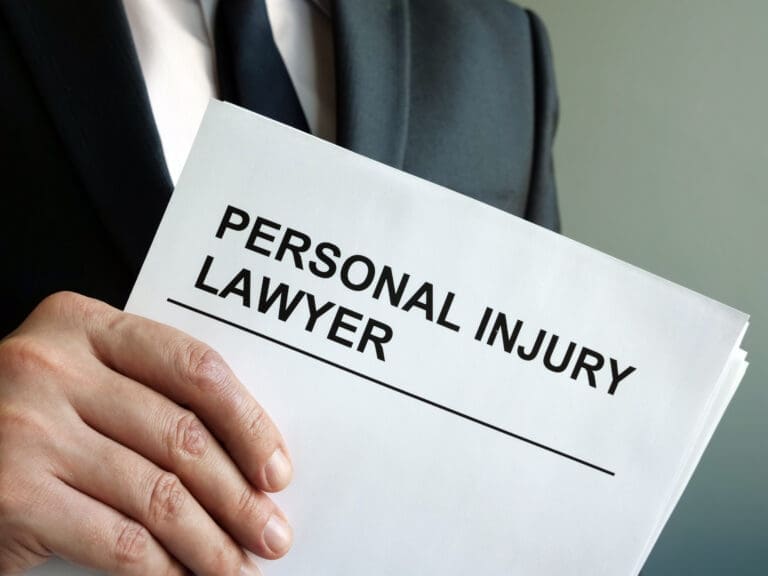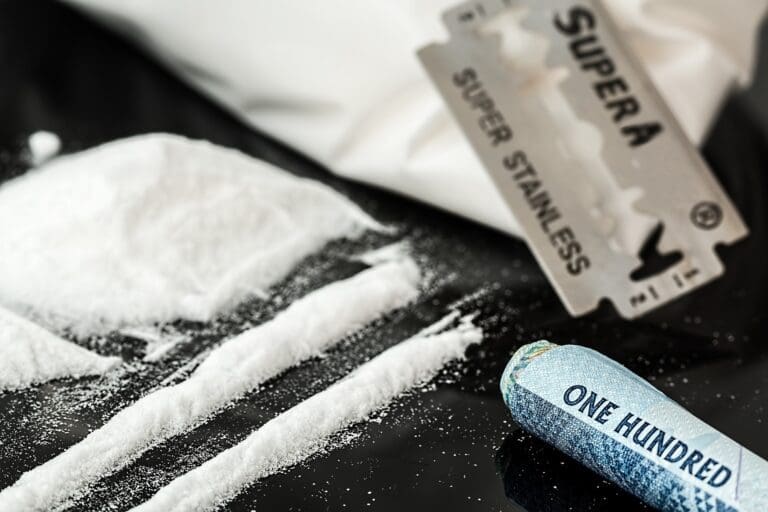
The promise of DNA evidence in criminal cases has long been heralded as a breakthrough in forensic science, offering the potential for both exonerating the innocent and convicting the guilty with scientific precision. Yet, beneath the surface of this powerful tool lies a complex web of challenges that can undermine its reliability and, in some cases, threaten the very foundation of justice. The reliability of Pruebas de ADN in criminal cases is not absolute; it is a matter of probabilities, procedures, and the integrity of both technology and human actors. As the legal industry grapples with these issues, understanding the nuances of DNA evidence challenges is essential for judges, attorneys, and anyone concerned with the fair administration of justice.
DNA evidence, while often presented as the gold standard in criminal investigations, is only as reliable as the methods used to collect, analyze, and interpret it. The process begins at the crime scene, where the collection of DNA samples must be performed with meticulous care. Any lapse in protocol—such as improper handling, lack of protective gear, or inadequate documentation—can introduce contamination, rendering the evidence suspect. Even the most sophisticated forensic laboratories are not immune to human error, and the chain of custody must be scrupulously maintained to ensure that the sample analyzed is the same as the one collected. Defense attorneys frequently scrutinize these procedures, knowing that any irregularity can cast doubt on the DNA evidence presented in court.
One of the most persistent challenges to the reliability of DNA evidence is the risk of contamination. DNA is a remarkably resilient molecule, but it is also ubiquitous. Trace amounts can linger on surfaces, tools, or even the hands of investigators, making it all too easy for extraneous DNA to be introduced into a sample. This is particularly problematic in cases involving low-template or “touch” DNA, where only a few cells are available for analysis. The sensitivity of modern testing methods means that even the smallest contamination can produce misleading results. Forensic analysts must therefore adhere to strict protocols, and any deviation can become a focal point for legal challenges.
The interpretation of DNA evidence is another area rife with complexity. Unlike the binary certainty often depicted in television dramas, DNA analysis is a probabilistic science. Forensic experts do not declare matches with absolute certainty; instead, they express their findings in terms of statistical likelihoods. For example, an expert might testify that the probability of a random person matching the ADN profile found at a crime scene is one in several million. While this sounds compelling, it is not an infallible guarantee. The statistical models used to calculate these probabilities depend on accurate population databases and sound scientific assumptions. If these underlying data are flawed or misapplied, the resulting probabilities can be misleading.
The challenge of mixed DNA samples further complicates matters. Crime scenes often yield ADN from multiple individuals, whether through physical contact, shared environments, or secondary transfer. Disentangling these mixtures requires advanced statistical techniques and, often, subjective judgment. Different analysts may interpret the same data in different ways, leading to competing narratives in the courtroom. The risk of misidentification increases when the sample is degraded, incomplete, or contains contributions from several people. Defense attorneys are well aware of these pitfalls and may call upon their own experts to contest the prosecution’s interpretation.
Chain of custody remains a cornerstone of evidentiary reliability. Every movement of a ADN sample—from collection to analysis—must be documented and accounted for. Any gap or ambiguity in this record opens the door to allegations of tampering, loss, or contamination. Courts have recognized the importance of this procedural safeguard, and challenges to the chain of custody are a common tactic in criminal defense. The integrity of the evidence is paramount; without it, even the most scientifically robust analysis is rendered meaningless.
Legal standards for the admissibility of Pruebas de ADN have evolved over time. Early cases relied on the Frye standard, which required scientific evidence to be generally accepted within the relevant community. As DNA technology advanced, the Daubert standard gained prominence, focusing on factors such as testability, peer review, error rates, and general acceptance. Judges now serve as gatekeepers, evaluating not only the scientific validity of the methods used but also the qualifications of the experts presenting the evidence. This shift has placed greater emphasis on rigorous methodology and transparent reporting, but it has also introduced new avenues for challenging the reliability of DNA evidence in court.
The advent of rapid DNA technology has introduced both opportunities and risks. Portable DNA analyzers can now deliver results in hours rather than weeks, allowing law enforcement to make swift decisions. However, the speed of these systems can come at the expense of accuracy if not properly regulated and validated. Concerns have been raised about the potential for misuse, especially in high-pressure situations where the desire for quick answers may override the need for careful analysis. The legal system must balance the benefits of rapid testing with the imperative to avoid wrongful convictions based on faulty evidence.
The use of DNA databases, such as the Combined DNA Index System (CODIS), has revolutionized the ability of law enforcement to solve crimes. By comparing crime scene profiles against a vast repository of known offenders, investigators can identify suspects who would otherwise remain unknown. However, the expansion of these databases raises significant privacy concerns. The collection of DNA from arrestees, even those not convicted of a crime, has been challenged on constitutional grounds. The potential for familial searching—where relatives of a suspect are identified through partial matches—further complicates the ethical landscape. Courts have generally upheld the use of DNA databases, but the debate over privacy rights versus public safety continues to evolve.
Ethical considerations extend beyond privacy. The overrepresentation of certain demographic groups in DNA databases has raised questions about racial disparities in policing and prosecution. Studies have shown that minority communities are more likely to be subject to DNA collection, leading to concerns about disproportionate surveillance and the potential for biased outcomes. The legal community must grapple with these issues, ensuring that the use of DNA evidence does not perpetuate existing inequalities within the justice system.
The phenomenon known as the “CSI effect” has also influenced the perception of DNA evidence in the courtroom. Jurors, conditioned by popular media to expect definitive scientific proof, may place undue weight on DNA findings or demand its presence in every case. This can create unrealistic expectations and shift the burden of proof in ways that are inconsistent with legal principles. Judges and attorneys must work to educate juries about the true nature of DNA evidence, emphasizing its strengths and limitations within the broader context of the case.
Post-conviction DNA testing has emerged as a critical safeguard against wrongful convictions. The Innocence Project and similar organizations have used DNA analysis to exonerate hundreds of individuals who were wrongfully imprisoned. These cases highlight both the power and the limitations of DNA evidence. In many instances, exculpatory DNA was available at the time of trial but was overlooked, ignored, or misinterpreted. The availability of post-conviction testing varies by jurisdiction, and legal battles over access to biological evidence continue to shape the landscape of criminal justice reform.
Despite its potential for exoneration, DNA evidence is available in only a small fraction of criminal cases. Many crimes do not yield biological evidence suitable for testing, and in some instances, the evidence has degraded or been lost over time. The backlog of untested rape kits in numerous jurisdictions underscores systemic issues in the handling and prioritization of forensic evidence. Efforts to address these backlogs have led to both new convictions and exonerations, but they have also exposed the limitations of relying solely on DNA to deliver justice.
Technological advances in DNA analysis have introduced new challenges. Low-copy-number (LCN) analysis allows for the detection of DNA from minute samples, but it also increases the risk of stochastic effects—random fluctuations that can lead to allele drop-out or drop-in. Laboratories must establish thresholds for reliable detection and employ replicate testing to confirm results. Even with these safeguards, the interpretation of low-template DNA remains a contentious issue, with the potential for both false inclusions and exclusions.
The subjectivity inherent in DNA interpretation cannot be overstated. Analysts must make judgment calls about which peaks in an electropherogram represent true alleles and which are artifacts. These decisions are influenced by experience, training, and sometimes unconscious bias. The use of probabilistic genotyping software has sought to standardize interpretations, but the underlying algorithms are often proprietary and not fully transparent to the defense. This lack of transparency has become a focal point for legal challenges, as defendants seek access to the code and validation studies underlying these tools.
Expert testimony is a critical component of DNA evidence in criminal cases. Prosecutors and defense attorneys alike rely on forensic experts to explain complex scientific concepts to judges and juries. The credibility and qualifications of these experts can be decisive, and cross-examination often centers on their methodology, experience, and potential conflicts of interest. Competing experts may offer divergent opinions on the same evidence, highlighting the importance of rigorous vetting and clear communication.
The cost and time associated with DNA analysis can also impact the administration of justice. High-quality testing requires specialized equipment, trained personnel, and strict adherence to protocols. Delays in processing can prolong investigations and trials, while limited resources may force prosecutors and defense attorneys to prioritize certain cases over others. The financial burden of independent testing can be prohibitive for indigent defendants, raising questions about equal access to justice.
Legal strategies for challenging DNA evidence are varied and nuanced. Defense attorneys may attack the chain of custody, highlight potential contamination, question the qualifications of analysts, or challenge the statistical models used to interpret the data. In some cases, they may seek to exclude the evidence entirely or, at a minimum, cast doubt on its reliability. The adversarial nature of the legal system ensures that DNA evidence is subject to rigorous scrutiny, but it also places a premium on the expertise and resources available to both sides.
The limitations of DNA evidence are not merely theoretical; they have real-world consequences. Numerous cases have come to light where faulty DNA analysis contributed to wrongful convictions. These miscarriages of justice often involve a combination of factors: misidentification, false confessions, invalid forensic testimony, and, at times, deliberate misconduct. The exoneration of innocent individuals through subsequent DNA testing underscores the need for vigilance and humility in the use of forensic science.
Privacy concerns surrounding DNA databases are not limited to criminal suspects. The rise of direct-to-consumer genetic testing has created vast repositories of genetic information, some of which have been accessed by law enforcement through legal and, at times, controversial means. The use of genetic genealogy to solve cold cases has been celebrated for its effectiveness but has also sparked debate over consent, data security, and the potential for unintended consequences. Legislatures and courts continue to grapple with the appropriate boundaries for the collection, storage, and use of genetic data.
Familial searching, a technique that identifies potential suspects by locating relatives in DNA databases, has proven both powerful and controversial. While it has led to the resolution of high-profile cases, it also raises ethical questions about the rights of individuals who have never been accused or convicted of a crime. The potential for false positives and the impact on minority communities are central to ongoing debates about the scope and regulation of this practice.
The international landscape for DNA evidence presents additional challenges. Different countries maintain varying standards for collection, analysis, and admissibility. Legal frameworks governing privacy, consent, and data retention differ widely, affecting the reliability and utility of DNA evidence across borders. As criminal investigations become increasingly global, harmonizing these standards remains a formidable task.
The reliability of DNA evidence in criminal cases is further complicated by the phenomenon of secondary transfer. It is now recognized that DNA can be transferred from person to person or object to object without direct contact. This means that finding a suspect’s DNA at a crime scene does not necessarily prove their presence or involvement. The legal implications of secondary transfer are profound, requiring careful consideration of the circumstances under which DNA was deposited and the likelihood of innocent explanations.
The future of DNA evidence in criminal cases will be shaped by ongoing advances in science and technology. New methods for analyzing degraded samples, improved statistical models, and greater transparency in probabilistic genotyping are on the horizon. At the same time, the legal system must remain vigilant in safeguarding the rights of the accused and ensuring that the pursuit of justice does not come at the expense of fairness or accuracy.
In the end, the reliability of DNA evidence in criminal cases depends on a confluence of factors: scientific rigor, procedural integrity, ethical standards, and legal safeguards. It is a tool of immense power, but one that must be wielded with care and humility. The legal industry must continue to educate itself and the public about the strengths and limitations of DNA evidence, resisting the temptation to view it as infallible. Only by acknowledging its challenges can we hope to harness its potential for truth while guarding against the risk of injustice.
Citations:
- Limitations of DNA Evidence in Criminal Cases
- DNA Evidence in Criminal Cases Overview
- Cases of Mishandled Forensic Evidence
- PubMed Study on DNA Analysis
- How DNA Evidence Works in Court
- Challenges with Low DNA Analysis
- NCBI Book on DNA Evidence
- Forensic DNA Analysis Challenges
- DNA Exonerations in the United States
- Forensic DNA Leading to Wrongful Convictions
- Challenging DNA Evidence in Florida Cases
- Frye Standard for Evidence Admissibility
- Faults in DNA Evidence for Criminal Cases
- DNA Evidence Limitations in Innocence Cases
- Role of DNA in Criminal Defense
- Challenging DNA Evidence in Criminal Cases
- Impact of DNA Evidence in Criminal Cases
- Admissibility of DNA Evidence in Court
- Challenging DNA Profiling in Court
- Limitations of DNA Evidence for Law Enforcement
- Role of DNA in Criminal Defense
- New York Times on DNA Evidence
- Critical View on Commercial DNA Databases
- DNA Exonerations in the United States
- Limits of Forensic DNA Analysis
- PMC Article on DNA Evidence
- Legal Issues in Collecting DNA Evidence
- NYCLU on DNA Collection Proposal
- OJP Report on DNA Evidence
- Disadvantages of RFLP DNA Analysis
- PBS Frontline on DNA Evidence Wars
- PMC Article on DNA Evidence
- ScienceDirect Article on DNA Analysis
- Finding Low Competition Keywords
- NIH Grants for DNA Research
- Guide to Low Competition Keywords
- Taylor Francis on DNA Analysis
- NCBI Book on DNA Evidence
- SEO as Part of Company DNA
- ABA Standards on DNA Evidence
- How to Find Low Competition Keywords
- Basics of DNA Evidence Analysis
- Ultimate Guide to Life Science SEO
- Admissibility of DNA Genetic Profiling
- Innocence Project Exoneration Data
- Exonerations by Year at Michigan Law
- Impact of Misleading Forensic Evidence
- DNA as an Exoneration Tool
- Death Penalty Info on Innocence
- NIJ Image on DNA Evidence
- Cold Cases Solved by DNA Evidence
- PubMed Study on DNA Analysis
- EJI on Wrongful Convictions
- NCBI Book on DNA Evidence
- Cold Cases Solved with Forensics
- NY Courts on DNA Exonerations
- Admissible DNA Testing Overview
- Daubert and Reliable DNA Testimony
- Admissible DNA Testing for Officers
- Expert Testimony in DNA Cases
- Importance of Chain of Custody
- Daubert vs Frye Standards
- DNA Evidence in Courtrooms
- SAKI on DNA Expert Testimony
- Consequences of Broken Chain of Custody
- Daubert Test for DNA Evidence
- Complete Overview of Medical Device SEO
- Nano Article on DNA Analysis
- ScienceDirect Article on Forensics
- Admissibility of DNA Evidence in Court
- DNA Evidence in Wrongful Convictions
- Cases of Mishandled Forensic Evidence
- Innocence Project Research Resources
- Using DNA to Solve Crimes
- DNA Expert Testimony Considerations
- Evidence Standards by State








